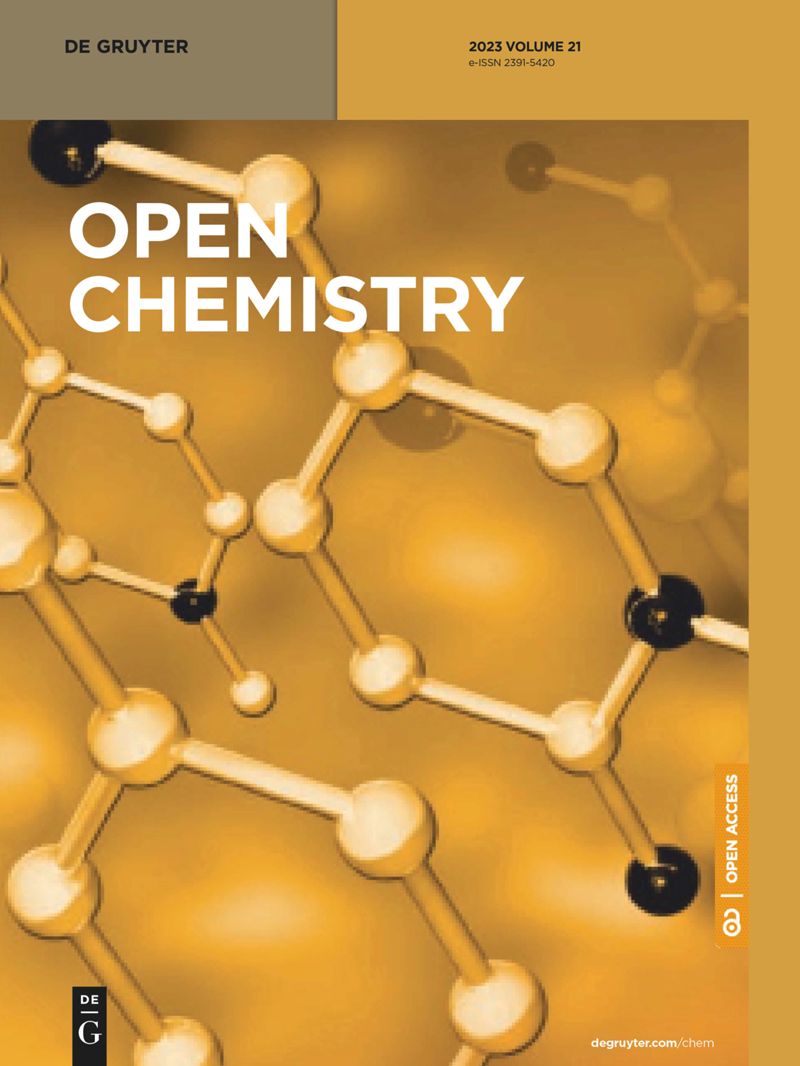阿尔及利亚高原百里香植物的化学成分和生物特性:比较和分析研究
IF 1.9
4区 化学
Q3 CHEMISTRY, MULTIDISCIPLINARY
引用次数: 0
摘要
茜草科植物含有生物活性药用化合物,主要用作观赏植物和传统药物,也可用于食品、化妆品和医药领域。常见用途包括治疗高胆固醇、糖尿病、呼吸道疾病、心脏病和食物中毒。这些药用用途与其成分和多种生物特性有关,包括抗菌剂和抗氧化剂。本研究的目的是调查阿尔及利亚东部两个不同地区(Souk ahras 和 Guelma)的百里香植物石油醚提取物的植物化学成分和生物活性,并使用 Clevenger 设备提取挥发油,然后使用气相色谱-质谱仪进行分析。结果显示,Souk Ahras 的酚类提取物中酚类化合物的总量较高(3.41 毫克 GAE g-1),而 Guelma 地区的黄酮类化合物含量较高(26.31 毫克 QE g-1)。通过高效液相色谱法(HPLC)对酚类化合物进行定量分析,我们发现酚类提取物中含有大部分比例不同的标准化合物。此外,我们还采用循环伏安法对酚类化合物的抗氧化活性进行了电化学测试。我们得出结论,鸠摩罗什提取物中的抗氧化剂含量最高(3.17 毫克 GAE g-1)。我们还利用 2,2-二苯基-1-苦基肼的化学方法对抗氧化活性进行了评估,结果表明,就 IC50% 值而言,Guelma 提取物表现出很高的有效性。在提取挥发油时,发现产量最高的是 Guelma 地区本文章由计算机程序翻译,如有差异,请以英文原文为准。
Chemical composition and biological properties of Thymus capitatus plants from Algerian high plains: A comparative and analytical study
The Lamiaceae family contains bioactive medicinal compounds mostly used as ornamental plants and traditional medicine, as well as in the food, cosmetics, and pharmaceutical sectors. Common uses include treating high cholesterol, diabetes, respiratory diseases, heart disease, and food poisoning. These medicinal uses were linked to their components and numerous biological properties, including antimicrobial and antioxidants. The goal of this study was to investigate the phytochemicals and biological activities of the petroleum ether extract of Thymus capitatus plant from two different regions of eastern Algeria (Souk ahras and Guelma), as well as to extract volatile oils using a Clevenger device and then analyze by using GC-MS. The results revealed that the total amount of phenolic compounds was better in the phenolic extract of Souk Ahras (3.41 mg GAE g−1 ), while the amount of flavonoid compounds was higher in the region of Guelma (26.31 mg QE g−1 ). Following the quantification of phenolic compounds by HPLC, we observed that the phenolic extracts contained most of the standard compounds in variable proportions. Furthermore, we tested the antioxidant activity of the phenolic compounds electrochemically with the cyclic voltammetry method. We concluded that the highest antioxidant content was recorded in the Guelma region extract (3.17 mg GAE g−1 ). We have also evaluated the antioxidant activity by a chemical method using 2,2-diphenyl-1-picrylhydrazyl, and the results showed that the Guelma extract exhibited a high effectiveness in terms of IC50 % values. When extracting the volatile oils, it was found that the highest yield was in the Guelma region
求助全文
通过发布文献求助,成功后即可免费获取论文全文。
去求助
来源期刊

Open Chemistry
CHEMISTRY, MULTIDISCIPLINARY-
CiteScore
3.80
自引率
4.30%
发文量
90
审稿时长
6 weeks
期刊介绍:
Open Chemistry is a peer-reviewed, open access journal that publishes original research, reviews and short communications in the fields of chemistry in an ongoing way. The central goal is to provide a hub for researchers working across all subjects to present their discoveries, and to be a forum for the discussion of the important issues in the field. The journal is the premier source for cutting edge research in fundamental chemistry and it provides high quality peer review services for its authors across the world. Moreover, it allows for libraries everywhere to avoid subscribing to multiple local publications, and to receive instead all the necessary chemistry research from a single source available to the entire scientific community.
 求助内容:
求助内容: 应助结果提醒方式:
应助结果提醒方式:


